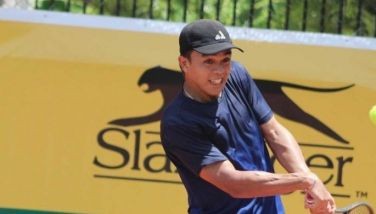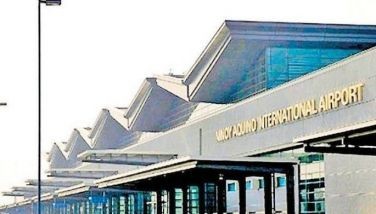Muslims commemorate Kabungsuwan’s coming
December 19, 2004 | 12:00am
COTABATO CITY — This year’s commemoration of the landing here in the 14th century of Malayan Islamic preacher Shariff Mohammad Kabungsuwan to propagate Islam in mainland Mindanao could be the most meaningful ever in the centuries-old history of the island’s Muslim community.
Local officials and leaders of Central Mindanao’s Muslim and Christian sectors will unveil in today’s observance of Kabungsuwan Day a 12-foot monument of his fourth-generation descendant, the legendary Sultan Kudarat, who once ruled a vast empire of mixed indigenous groups which stood together against the Spaniards.
Kabungsuwan and Sultan Kudarat are both icons of a strong Muslim leadership which adhered, according to stories handed down from one generation to another, to the Islamic context of equality of all men before Allah and exemplified how it was to peacefully co-exist with non-Muslims as espoused by the Qur’an.
Since the late 1970s, the Kabungsuwan Day has been observed as a non-working holiday in Central Mindanao, a yearly event where regional folk commemorate the arrival of Kabungsuwan, a Malay preacher from Johore, to spread Islam.
Cotabato City Mayor Muslimin Sema, whose office is overseeing the preparations for today’s event, said Sultan Kudarat’s monument at the city plaza is a joint effort of the city government, the Ayala Foundation and the Department of Education.
Sema, secretary general of the Moro National Liberation Front, said he is optimistic that the unveiling of the statue of Sultan Kudarat to cap the week-long Kabungsuwan festivities, will usher in the "revival" of the quality of leadership exemplified by the early Moro leaders, who relied on goodwill and diplomacy in governing their communities.
"This is not to idolize both Kabungsuwan and Sultan Kudarat, for idolatry is forbidden in Islam, but to keep their examples in our minds and hearts as guides for all our peace-building activities and to keep our zeal of fostering peace and sustainable development in Mindanao," said Sema, whose clan is one of the descendants of the Kabungsuwan-Kudarat bloodline.
It was 600 years ago when Kabungsuwan, according to contemporary Maguindanaon historians, sailed on board a vessel called ginakit from the port of Johore, in what is now Malaysia, to the Bucana area here where he founded the first-ever peaceful community of Maguindanaons, Iranons and Maranaws who willingly embraced the faith he had introduced.
The ethnic pagans found Kabungsuwan strange and even thought he was a crazy man for praying five times a day in Arabic, facing the direction of Mecca, the seat of the Islamic faith, in what is now the Kingdom of Saudi Arabia.
Soon after, residents in the Bucana area and surrounding ilod communities, or those in the lower delta of Central Mindanao, started embracing Islam and even helped Kabungsuwan organize communities governed by the Islamic principles of consensus-building, transparency and oneness in the affairs of the state and religion.
From the villages at the mouth of Rio Grande de Mindanao to this city’s shorelines, Kabungsuwan, who belonged to the Johore royalty, gradually expanded his sphere of leadership in the raya (upstream) communities, up to what are now North Cotabato, Davao and Bukidnon. He was even said to have had four wives in Mindanao, from whom the Maguindanaon nobility descended.
Some 300 years later, Sultan Kudarat was born. A direct descendant of Kabungsuwan, he was of a mixed Iranon, Maguindanaon and Maranaw descent.
As a young blue-blooded leader, Kudarat became popular for his pacification campaigns in troubled Muslim communities during his heyday. He brokered peace pacts among feuding clans in Central Mindanao and banded them together under what are now acknowledged as "royal houses" which bear the traditional Moro kris emblem.
The kris is a traditional bladed weapon Kudarat and his followers used in fighting the Spaniards who established colonies in some parts of Mindanao.
The geographical identity of Cotabato City was, in fact, derived from Kuta Wato, or the legendary Tantawan, a strategic hill overlooking the banks of Rio Grande de Mindanao, where Kudarat built a defense post from where he commanded his forces which fought the foreign invaders.
Local officials and leaders of Central Mindanao’s Muslim and Christian sectors will unveil in today’s observance of Kabungsuwan Day a 12-foot monument of his fourth-generation descendant, the legendary Sultan Kudarat, who once ruled a vast empire of mixed indigenous groups which stood together against the Spaniards.
Kabungsuwan and Sultan Kudarat are both icons of a strong Muslim leadership which adhered, according to stories handed down from one generation to another, to the Islamic context of equality of all men before Allah and exemplified how it was to peacefully co-exist with non-Muslims as espoused by the Qur’an.
Since the late 1970s, the Kabungsuwan Day has been observed as a non-working holiday in Central Mindanao, a yearly event where regional folk commemorate the arrival of Kabungsuwan, a Malay preacher from Johore, to spread Islam.
Cotabato City Mayor Muslimin Sema, whose office is overseeing the preparations for today’s event, said Sultan Kudarat’s monument at the city plaza is a joint effort of the city government, the Ayala Foundation and the Department of Education.
Sema, secretary general of the Moro National Liberation Front, said he is optimistic that the unveiling of the statue of Sultan Kudarat to cap the week-long Kabungsuwan festivities, will usher in the "revival" of the quality of leadership exemplified by the early Moro leaders, who relied on goodwill and diplomacy in governing their communities.
"This is not to idolize both Kabungsuwan and Sultan Kudarat, for idolatry is forbidden in Islam, but to keep their examples in our minds and hearts as guides for all our peace-building activities and to keep our zeal of fostering peace and sustainable development in Mindanao," said Sema, whose clan is one of the descendants of the Kabungsuwan-Kudarat bloodline.
It was 600 years ago when Kabungsuwan, according to contemporary Maguindanaon historians, sailed on board a vessel called ginakit from the port of Johore, in what is now Malaysia, to the Bucana area here where he founded the first-ever peaceful community of Maguindanaons, Iranons and Maranaws who willingly embraced the faith he had introduced.
The ethnic pagans found Kabungsuwan strange and even thought he was a crazy man for praying five times a day in Arabic, facing the direction of Mecca, the seat of the Islamic faith, in what is now the Kingdom of Saudi Arabia.
Soon after, residents in the Bucana area and surrounding ilod communities, or those in the lower delta of Central Mindanao, started embracing Islam and even helped Kabungsuwan organize communities governed by the Islamic principles of consensus-building, transparency and oneness in the affairs of the state and religion.
From the villages at the mouth of Rio Grande de Mindanao to this city’s shorelines, Kabungsuwan, who belonged to the Johore royalty, gradually expanded his sphere of leadership in the raya (upstream) communities, up to what are now North Cotabato, Davao and Bukidnon. He was even said to have had four wives in Mindanao, from whom the Maguindanaon nobility descended.
Some 300 years later, Sultan Kudarat was born. A direct descendant of Kabungsuwan, he was of a mixed Iranon, Maguindanaon and Maranaw descent.
As a young blue-blooded leader, Kudarat became popular for his pacification campaigns in troubled Muslim communities during his heyday. He brokered peace pacts among feuding clans in Central Mindanao and banded them together under what are now acknowledged as "royal houses" which bear the traditional Moro kris emblem.
The kris is a traditional bladed weapon Kudarat and his followers used in fighting the Spaniards who established colonies in some parts of Mindanao.
The geographical identity of Cotabato City was, in fact, derived from Kuta Wato, or the legendary Tantawan, a strategic hill overlooking the banks of Rio Grande de Mindanao, where Kudarat built a defense post from where he commanded his forces which fought the foreign invaders.
BrandSpace Articles
<
>
- Latest
- Trending
Trending
Latest
Trending
Latest
Recommended
































